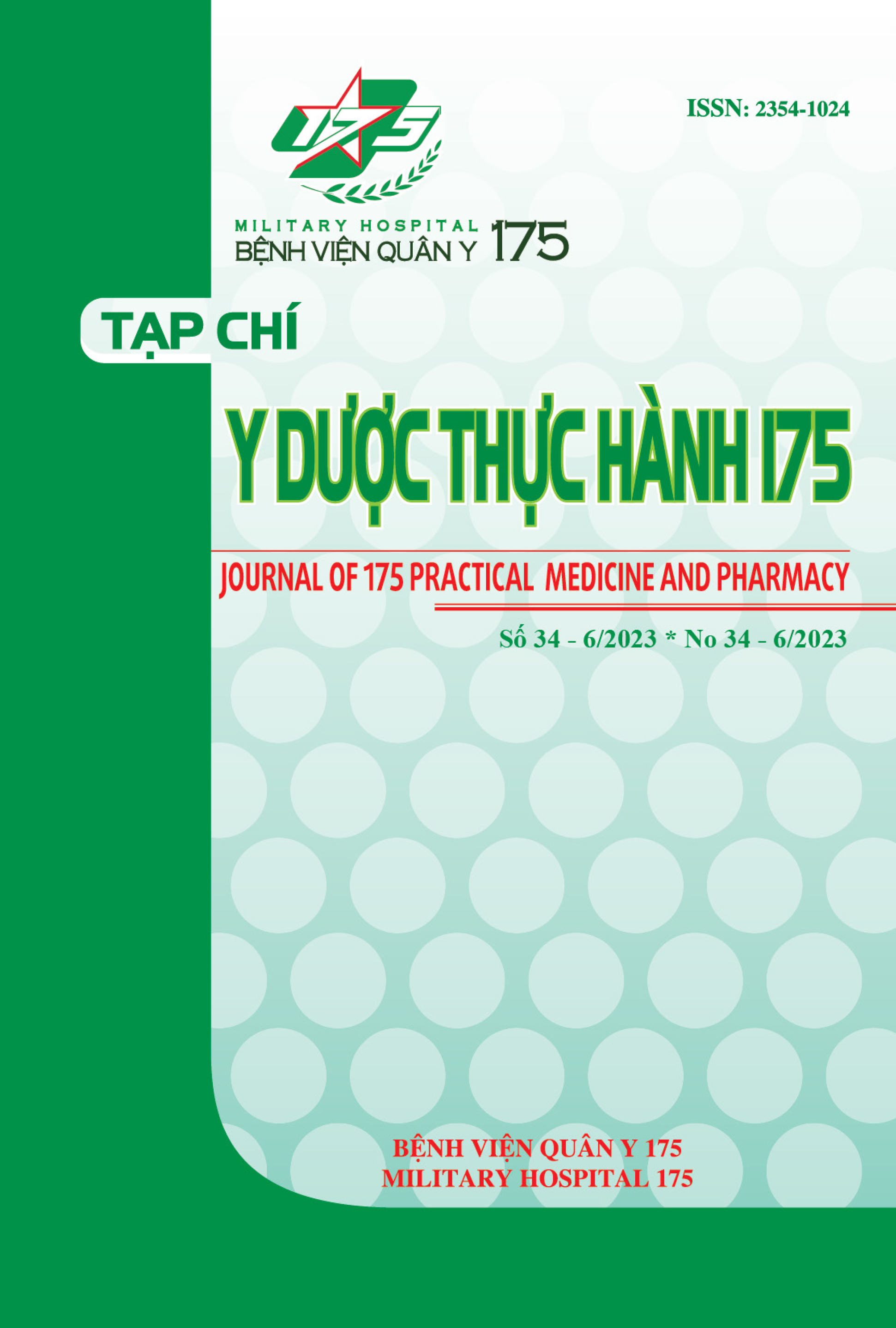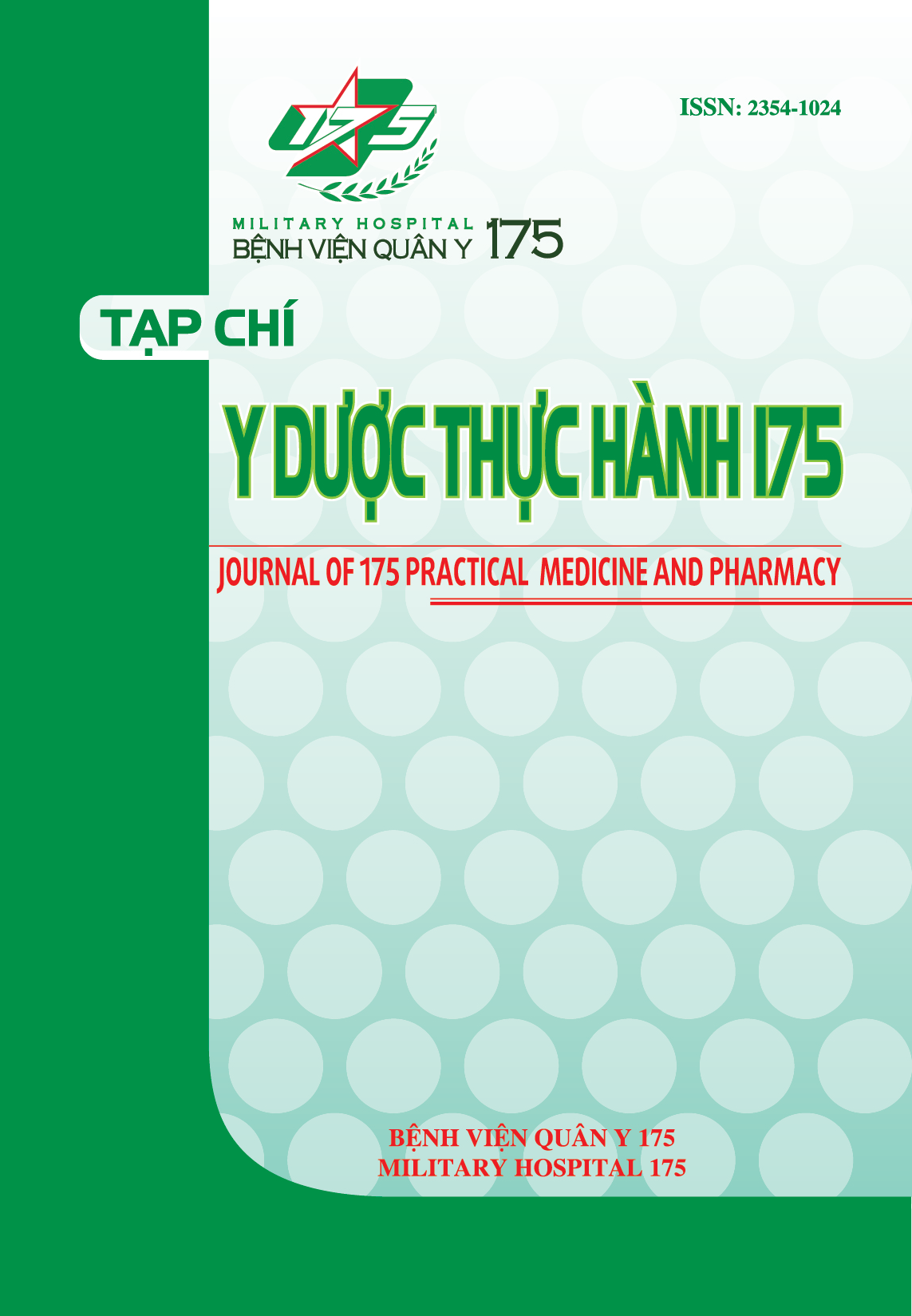THE RESULTS OF SURVEY OF ELECTROCARDIOGRAM IN ATHLETES OF NATIONAL TEAMS
Authors
DOI: https://doi.org/10.59354/ydth175.2023.208Keywords:
Athletes, Routine electrocardiogram, Stress electrocardiogram, Stress physical testReferences
ACC/AHA (2002). Guideline Update for Exercise Testing, Summary Article. http://circ.ahajournals.org/cgi/ content/full/106/14/1883.
Bộ Y tế (2014). Thông tư số 14/2013/TT-BYT ngày 02/6/2014 của Bộ Y tế hướng dẫn khám sức khỏe.
VõTường Kha (2021). Sàng lọc bệnh tật và công tác y tế đội tuyển: Yếu tố quan trọng trong tổ chức giải thi đấu thể thao, Tạp chícủa liên đoàn Bóng đáViệt Nam. https://bongdaplus.vn/bong-da-viet-nam/sang-loc-benh-tat-va-cong-tac-y-te-doi-tuyen-yeu-to-quan-trong-trong-to-chuc-giai-thi-dau-the-thao-3354312106. html.
Nguyễn Quý Khoáng, Nguyễn Quang Trọng (2017). Chẩn đoán hình ảnh hệ tim mạch, Bản dịch của Michael J. Shea MD. Michigan Medicine at the University of Michigan.
P. Kligfield (2008). “Principles of simple heart rate adjustment of ST seg¬ment depression during exercise electro¬cardiography”. Cardiology Journal 2008, Vol. 15, No. 2, pp. 194–200. Truy cập ngày 28/09/2022 tại địa chỉ https://citeseerx.ist. psu.edu/viewdoc/download? doi=10.1.1.8 73.7624&rep=rep1&type=pdf.
Khmeleva.X.N và cộng sự (1998). Thích nghi đối với lượng vận động và đặc điểm y sinh học của nó ở VĐV các môn thể thao với chu kỳ. Thông tin khoa học kỹ thuật TDTT (236), tr. 18-22.
Maron BJ, Van Camp SP ( 2009). “Recommendations for prepartici¬pation screening and the assessment of cardiovascular disease in masters athletes: an advisory for healthcare professionals from the working groups of the World Heart Federation, the International Federa¬tion of Sports Medicine, and the American Heart Association Committee on Exercise, Cardiac Rehabilitation, and Prevention”. American Heart Association, Epub 2009 Oct 5.
Huỳnh Văn Minh (2003). “Trắc nghiệm gắng sức trong bệnh lý Tim mạch”. Bài giảng sau đại học. Đại học Y Huế, tr. 1-11.
Nguyễn Văn Mùi và cộng sự (1999 ). Nghiên cứu đặc điểm điện tâm đồ một số VĐV thể thao của Hải Phòng. Nhàxuất bản TDTT, tr. 1-5.
VũThịThu Thủy (2010). Đánh giá khả năng gắng sức ở nam vận động viên các môn sức bền thuộc đội tuyển quốc gia bằng điện tim gắng sức. Luận văn tốt nghiệp bác sỹchuyên khoa cấp II. Học viện Quân Y 103.
Trần Đỗ Trinh, Trần Văn Đồng (2007). Hướng dẫn đọc điện tâm đồ. Nhà Xuất bản Y học.
Nguyễn Lân Việt, Trương Thanh Hương, Đỗ Doãn Lợi và CS (2011). Ứng dụng các phương pháp chẩn đoán sàng lọc nhằm phát hiện sớm bệnh tim thiếu máu cục bộ. Tạp chí Tim Mạch học Việt Nam, tr. 58.
Nguyễn Lân Việt, Phạm Đình Phong (2013). Bệnh tim mạch ở vận động viên. Báo cáo Hội nghị Tim mạch toàn quốc, Viện Tim mạch Việt Nam.
Downloads
PDF Downloaded: 46










